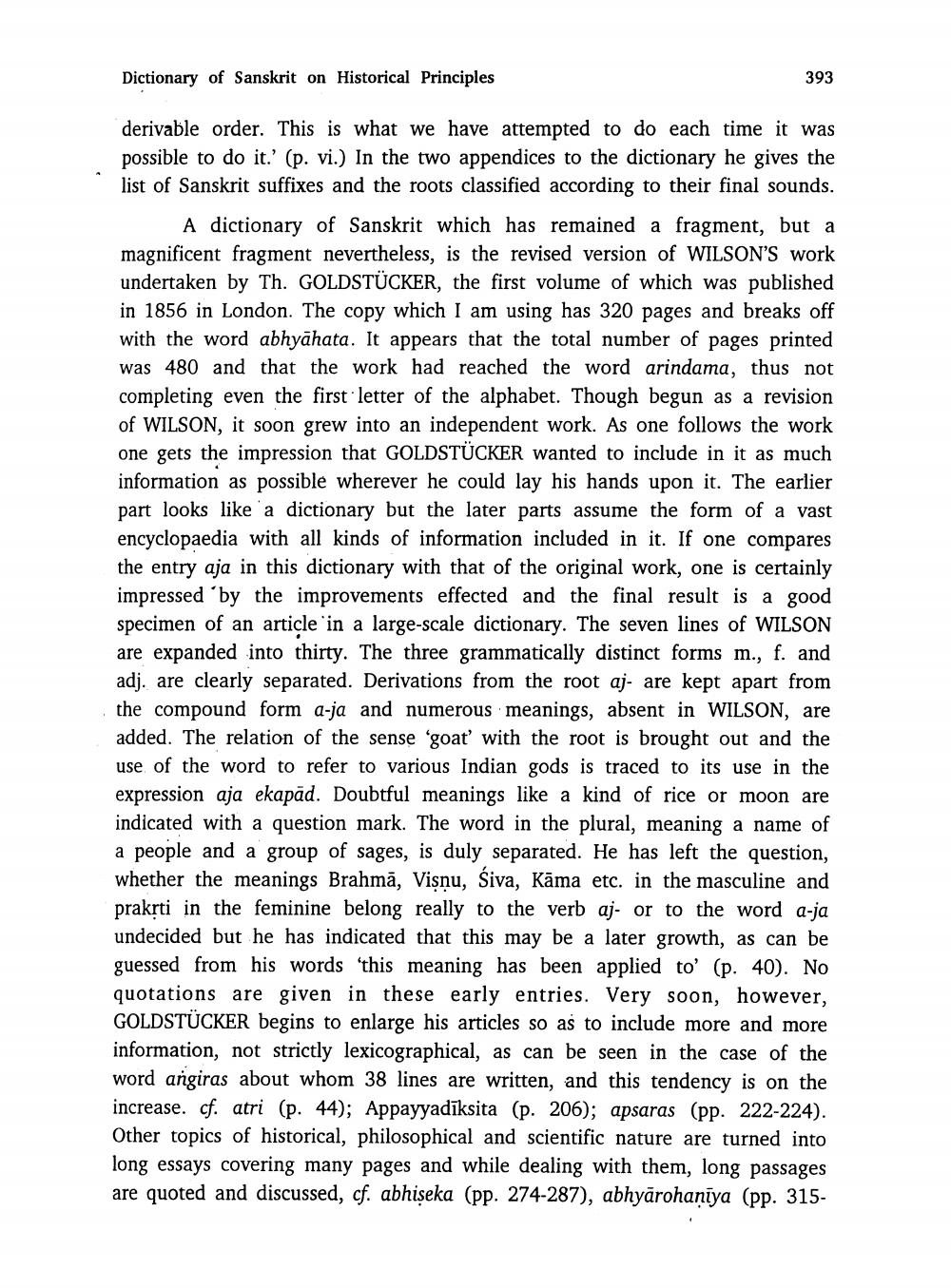________________
Dictionary of Sanskrit on Historical Principles
393
derivable order. This is what we have attempted to do each time it was possible to do it.' (p. vi.) In the two appendices to the dictionary he gives the list of Sanskrit suffixes and the roots classified according to their final sounds.
A dictionary of Sanskrit which has remained a fragment, but a magnificent fragment nevertheless, is the revised version of WILSON'S work undertaken by Th. GOLDSTUCKER, the first volume of which was published in 1856 in London. The copy which I am using has 320 pages and breaks off with the word abhyāhata. It appears that the total number of pages printed was 480 and that the work had reached the word arindama, thus not completing even the first letter of the alphabet. Though begun as a revision of WILSON, it soon grew into an independent work. As one follows the work one gets the impression that GOLDSTÜCKER wanted to include in it as much information as possible wherever he could lay his hands upon it. The earlier part looks like a dictionary but the later parts assume the form of a vast encyclopaedia with all kinds of information included in it. If one compares the entry aja in this dictionary with that of the original work, one is certainly impressed by the improvements effected and the final result is a good specimen of an article in a large-scale dictionary. The seven lines of WILSON are expanded into thirty. The three grammatically distinct forms m., f. and adj. are clearly separated. Derivations from the root aj. are kept apart from the compound form a-ja and numerous meanings, absent in WILSON, are added. The relation of the sense 'goat' with the root is brought out and the use of the word to refer to various Indian gods is traced to its use in the expression aja ekapad. Doubtful meanings like a kind of rice or moon are indicated with a question mark. The word in the plural, meaning a name of a people and a group of sages, is duly separated. He has left the question, whether the meanings Brahmā, Visnu, Śiva, Kāma etc. in the masculine and prakrti in the feminine belong really to the verb aj- or to the word a-ja undecided but he has indicated that this may be a later growth, as can be guessed from his words 'this meaning has been applied to' (p. 40). No quotations are given in these early entries. Very soon, however, GOLDSTÜCKER begins to enlarge his articles so as to include more and more information, not strictly lexicographical, as can be seen in the case of the word angiras about whom 38 lines are written, and this tendency is on the increase. cf. atri (p. 44); Appayyadīksita (p. 206); apsaras (pp. 222-224). Other topics of historical, philosophical and scientific nature are turned into long essays covering many pages and while dealing with them, long passages are quoted and discussed, cf. abhiseka (pp. 274-287), abhyārohaniya (pp. 315




